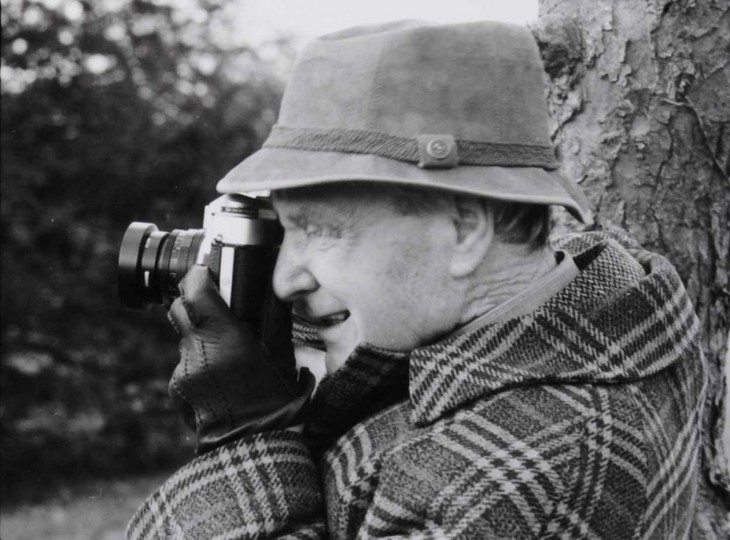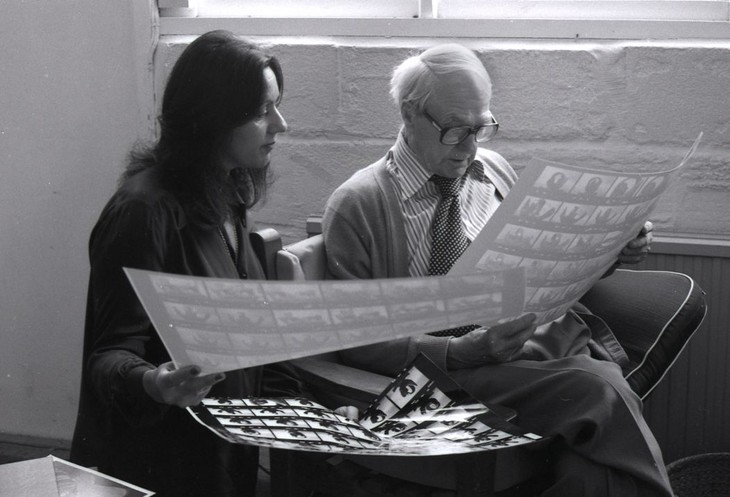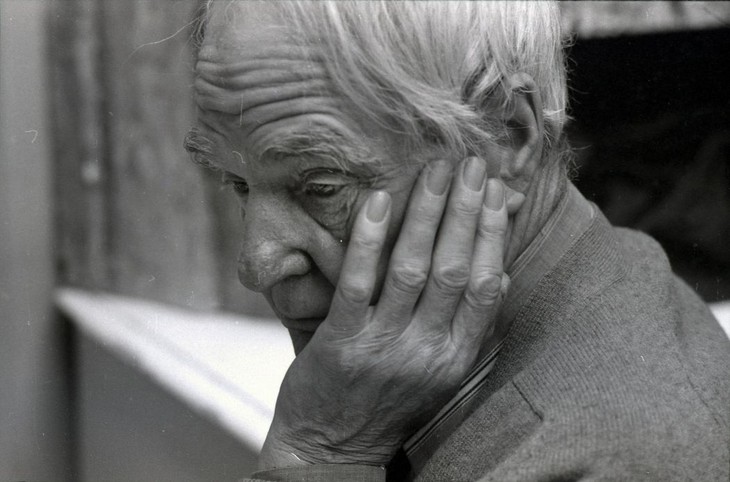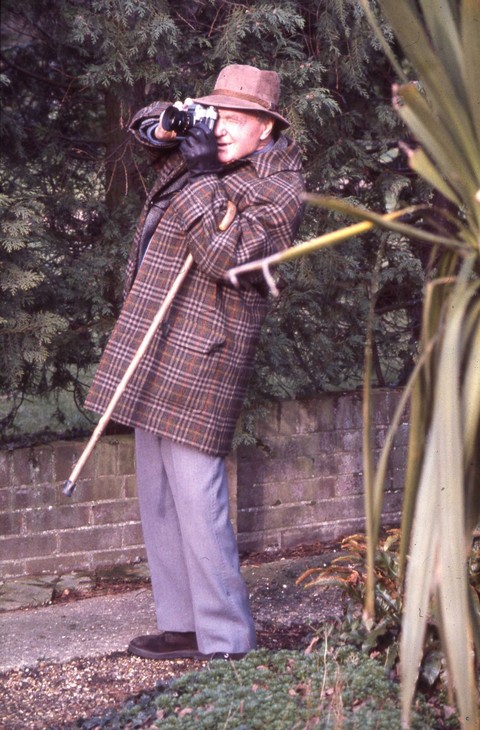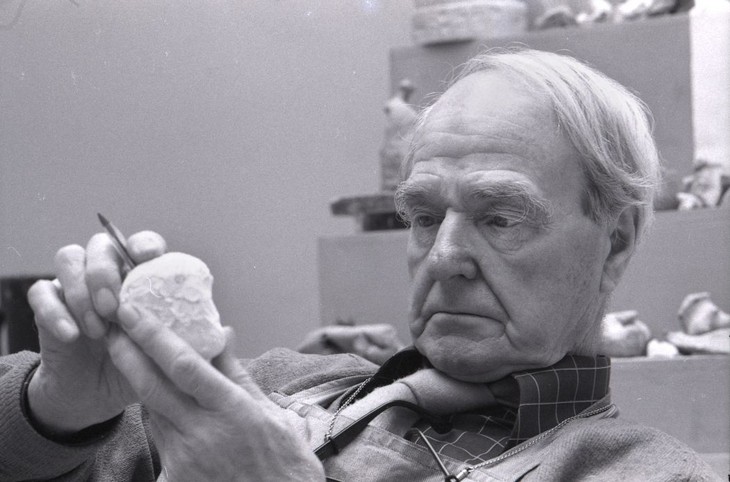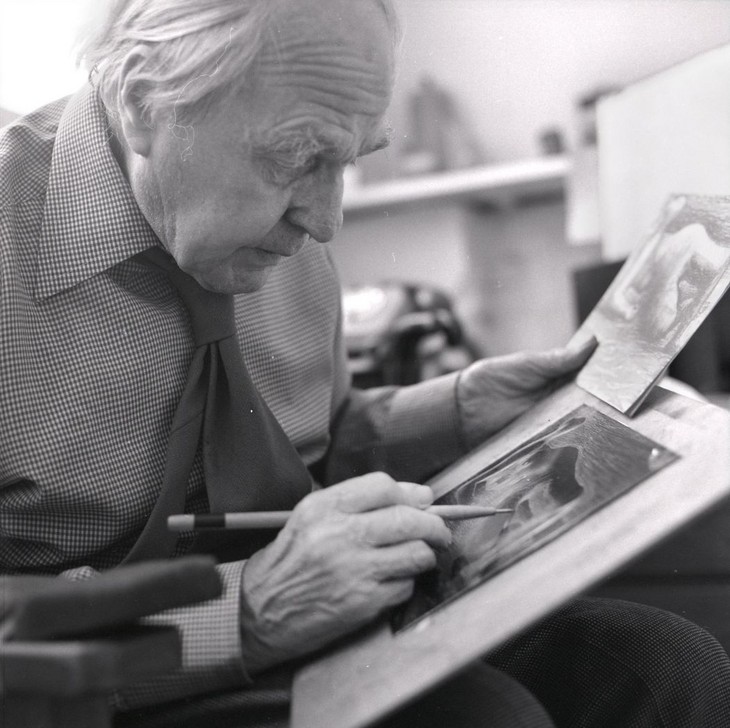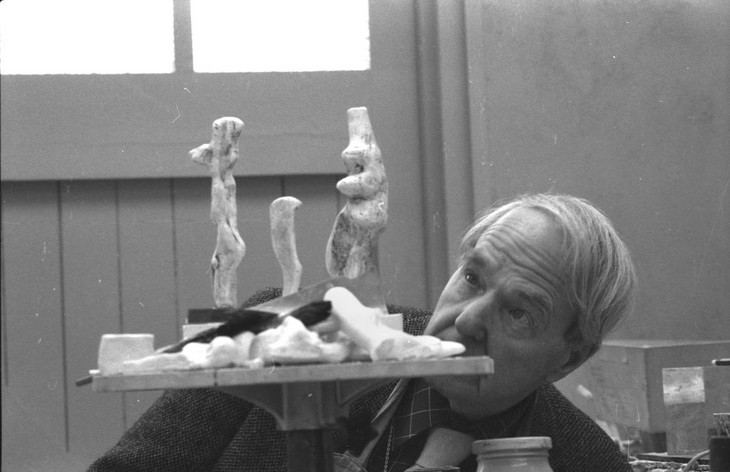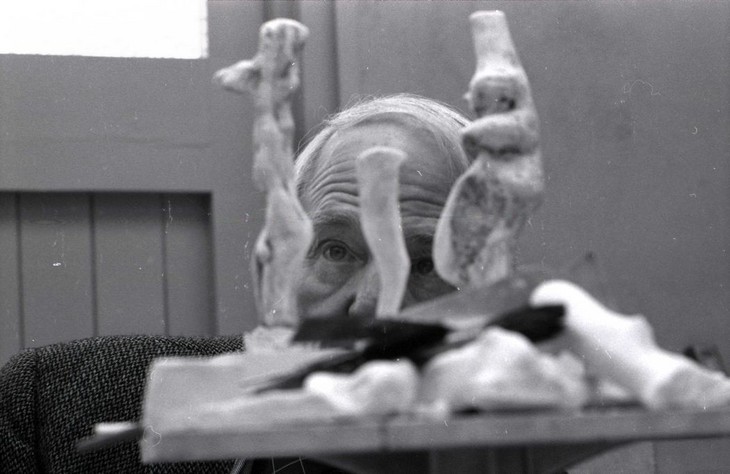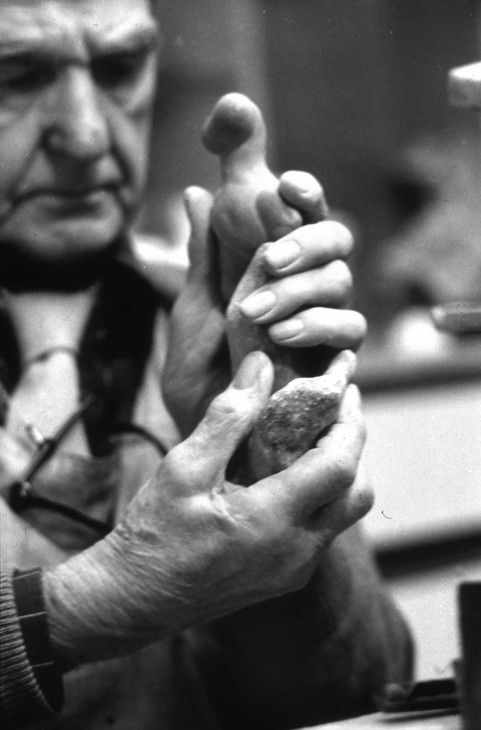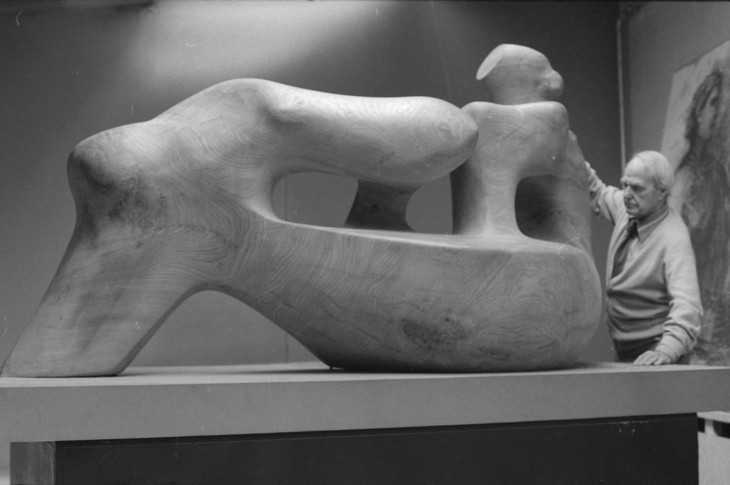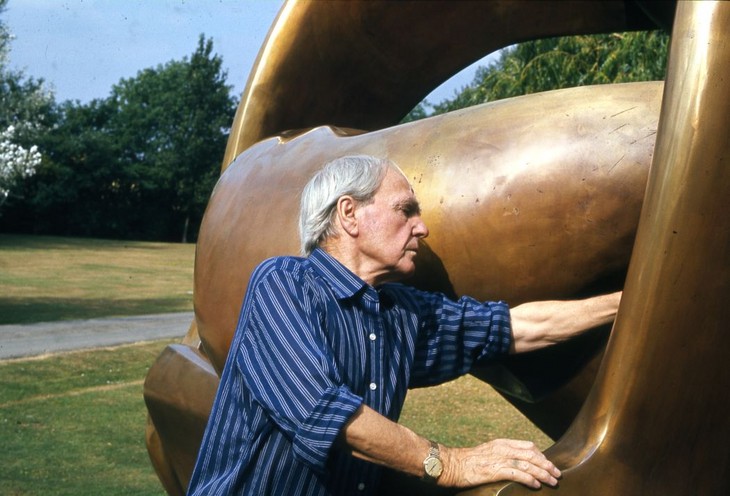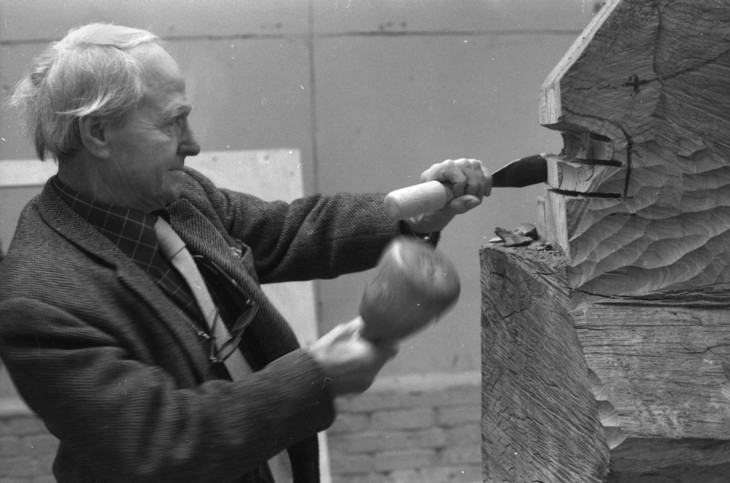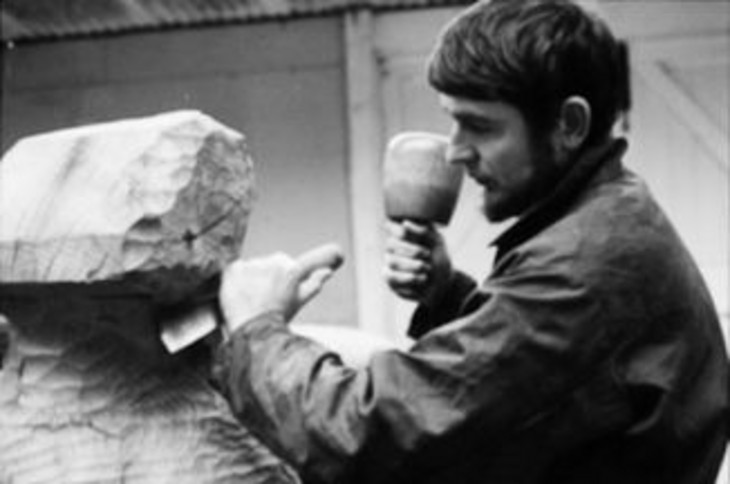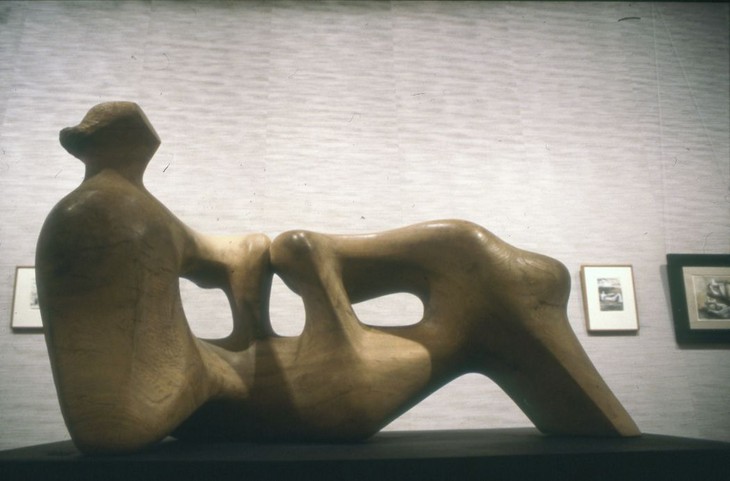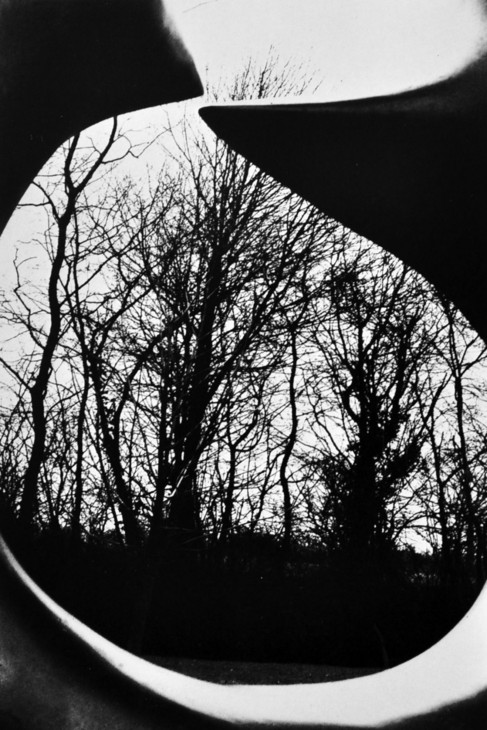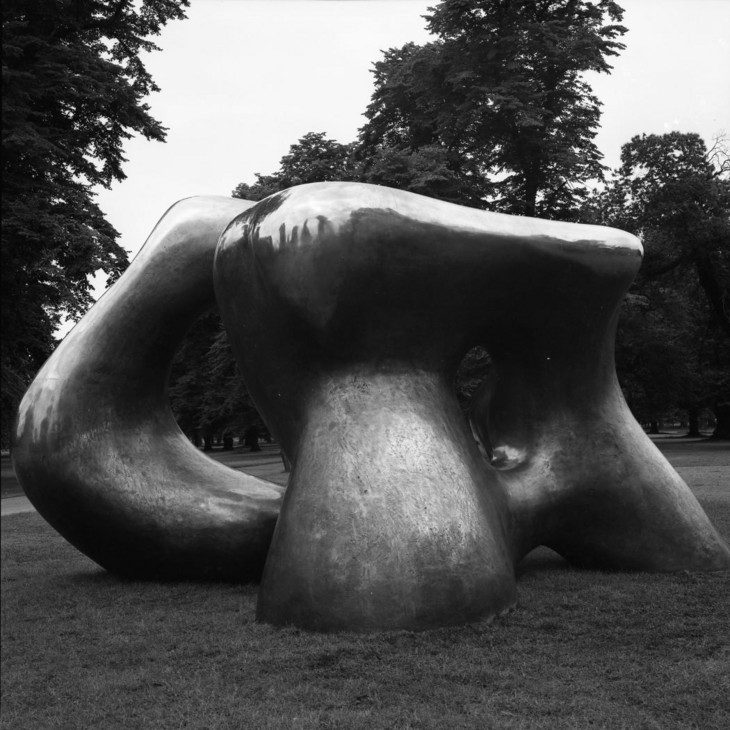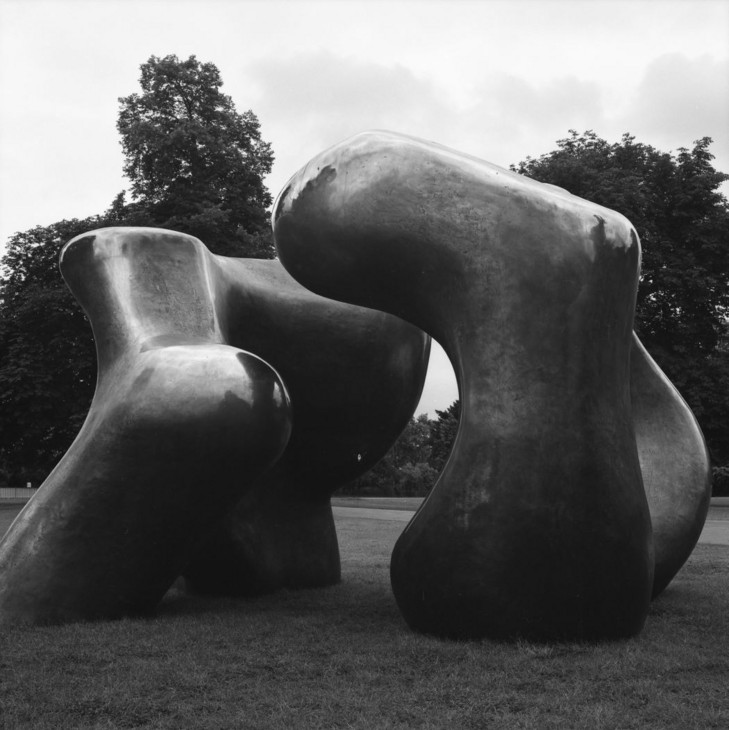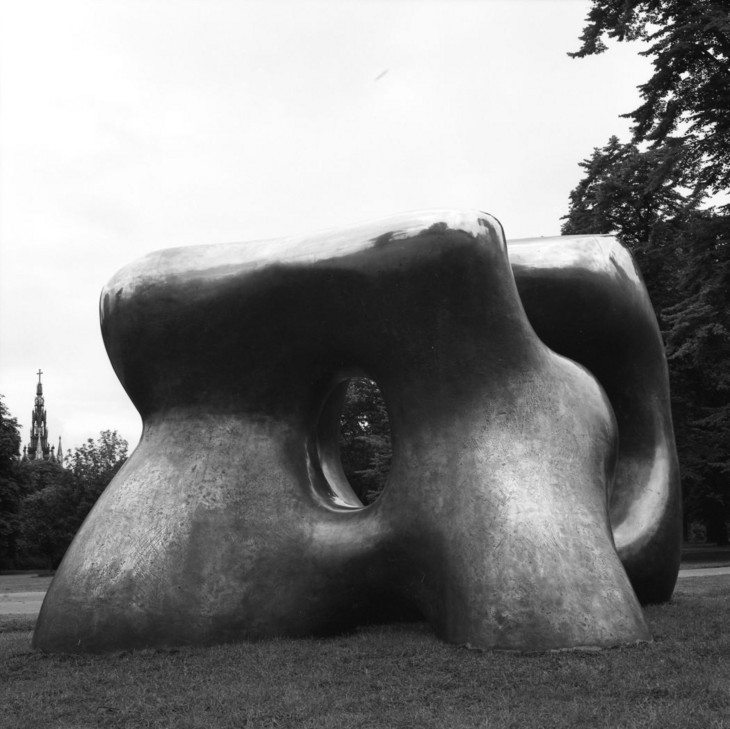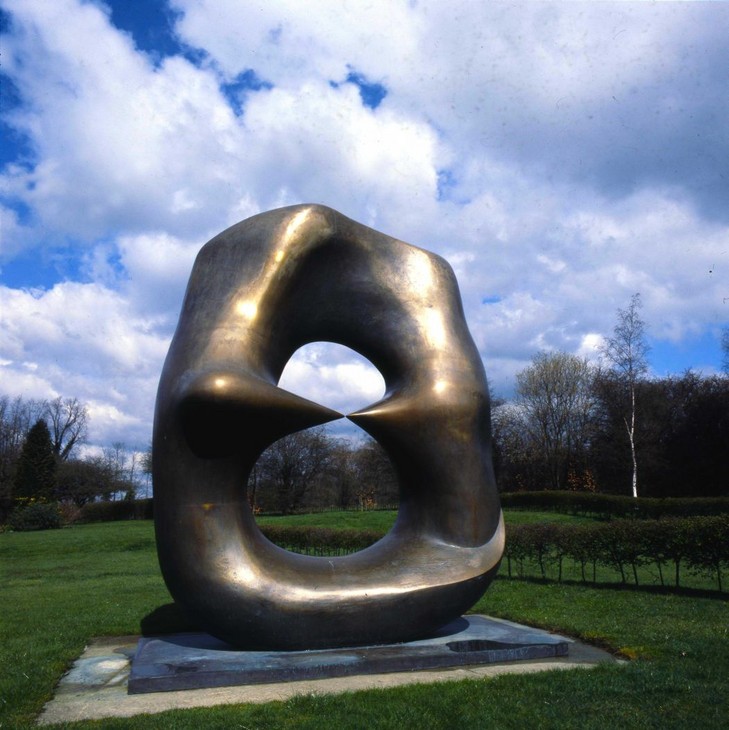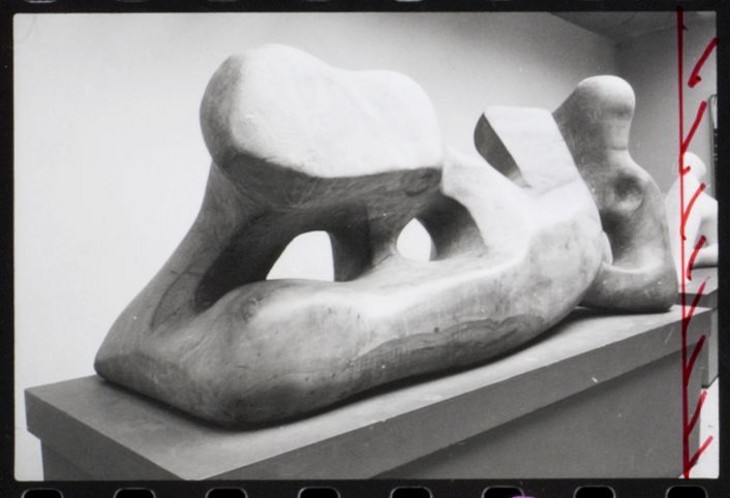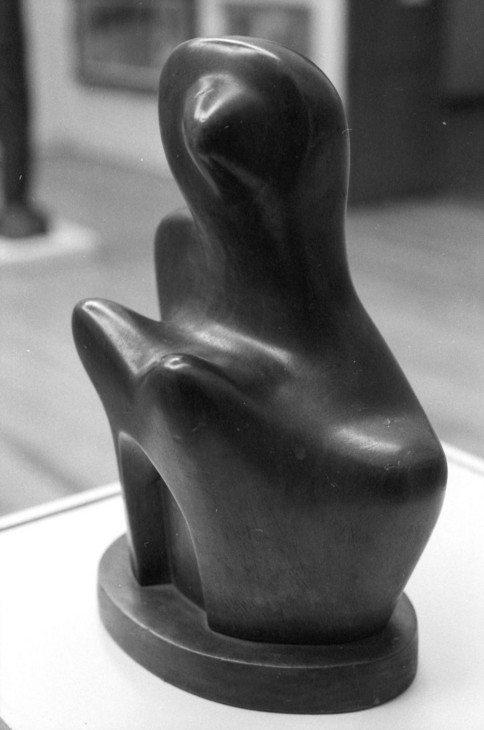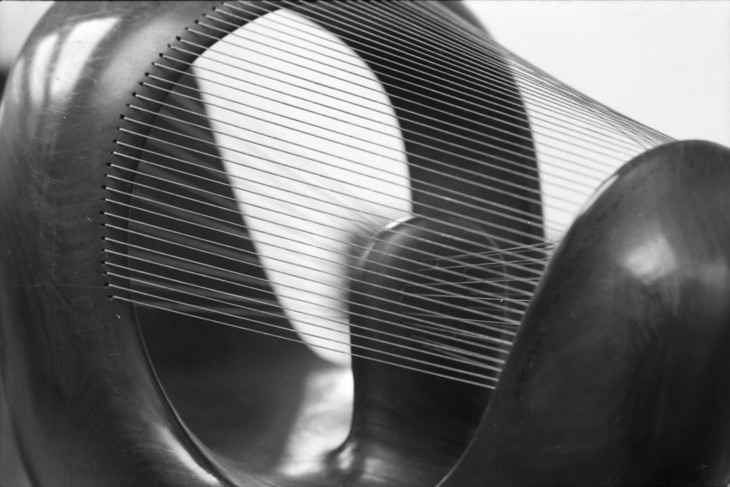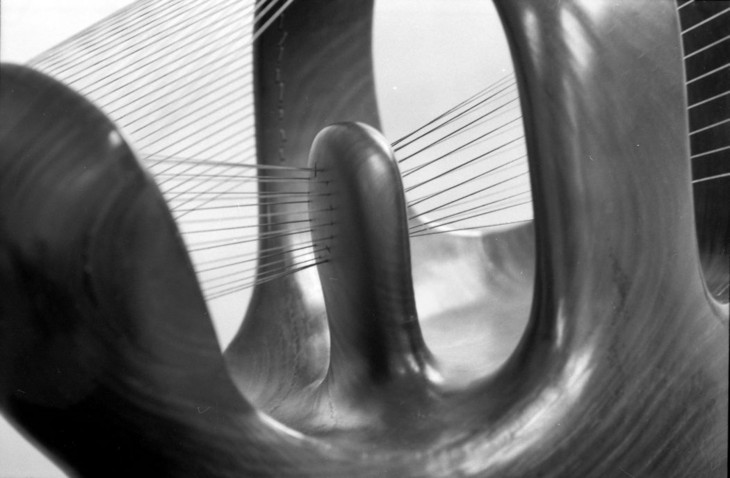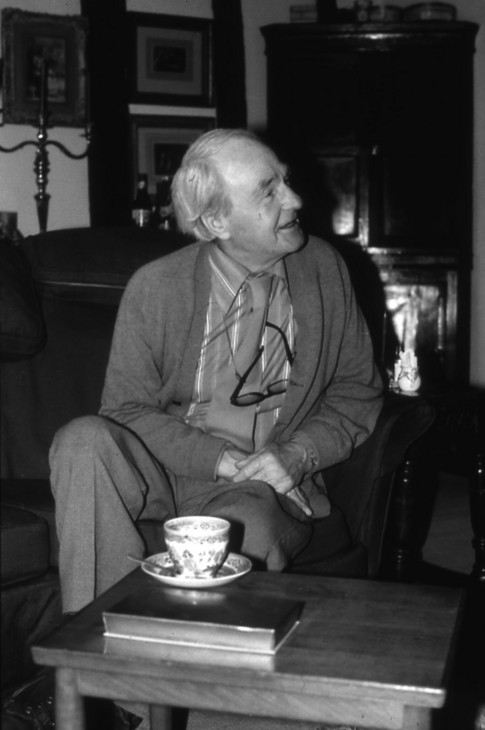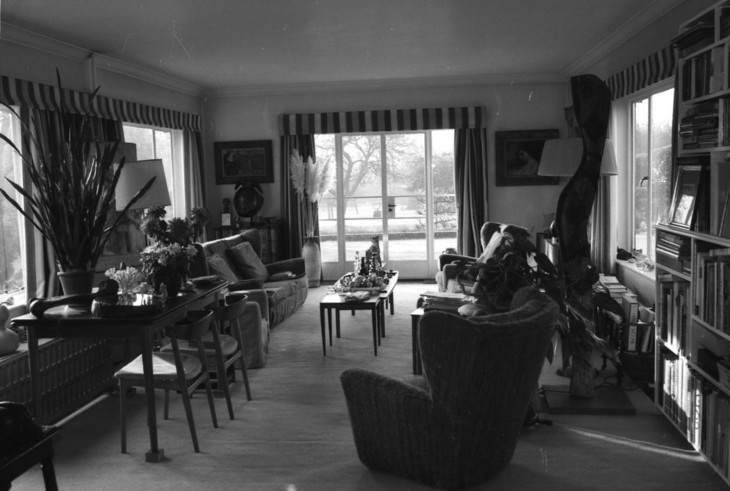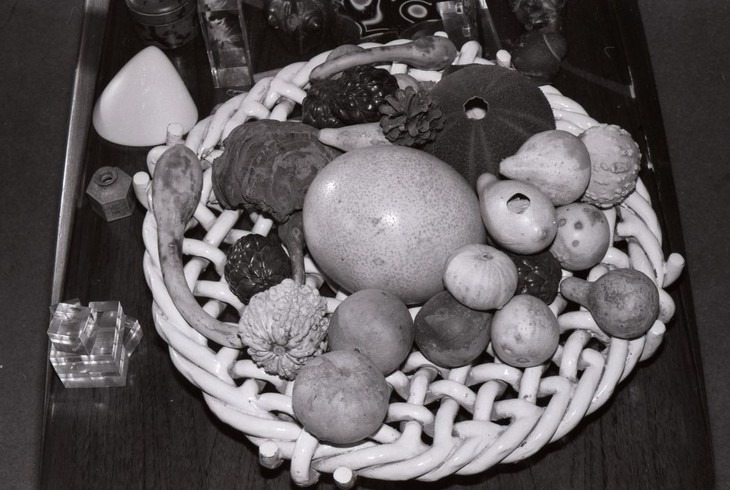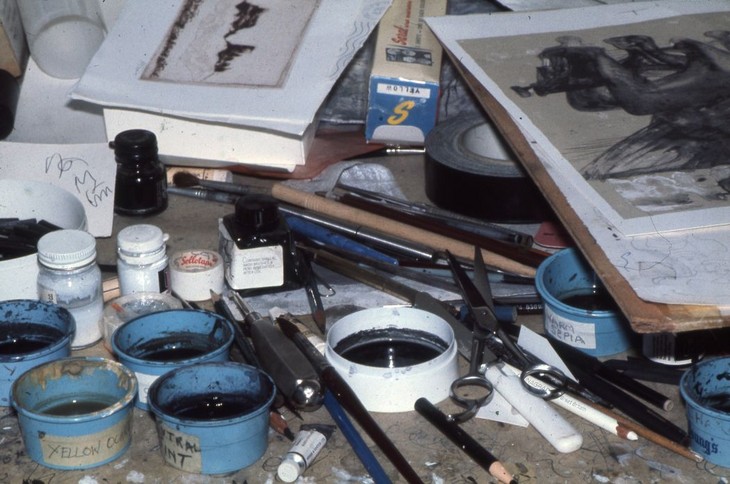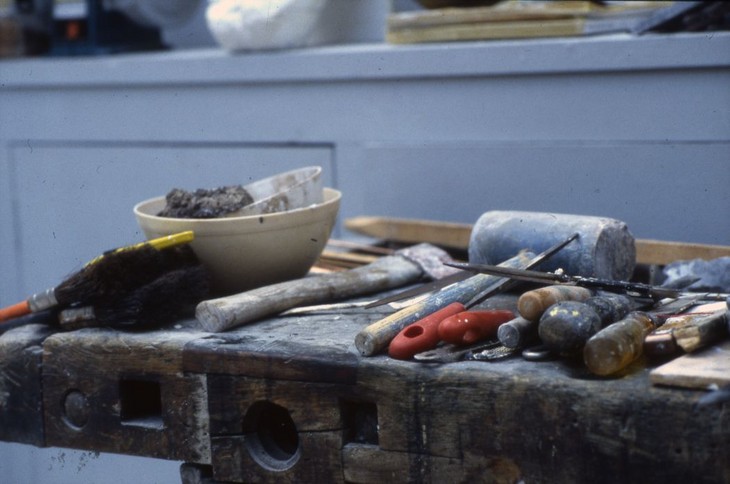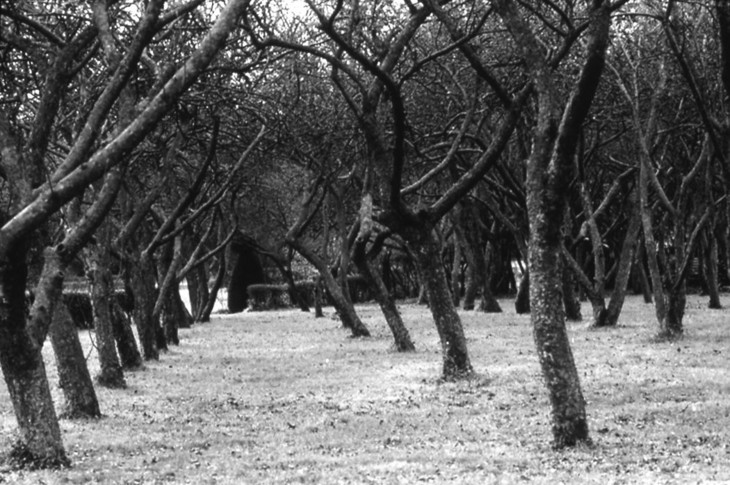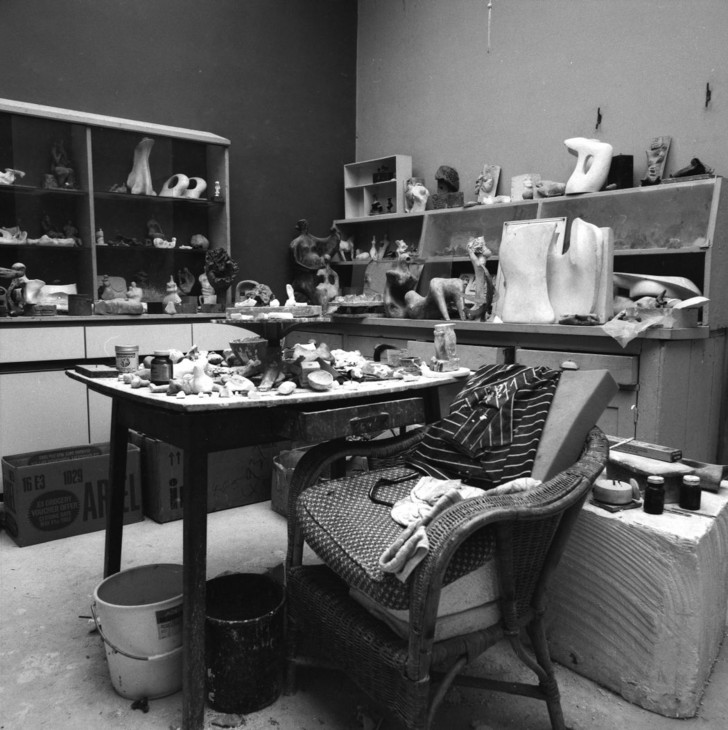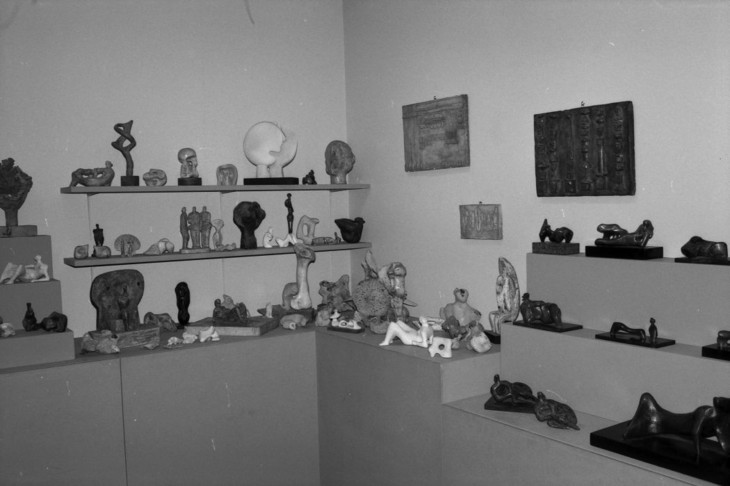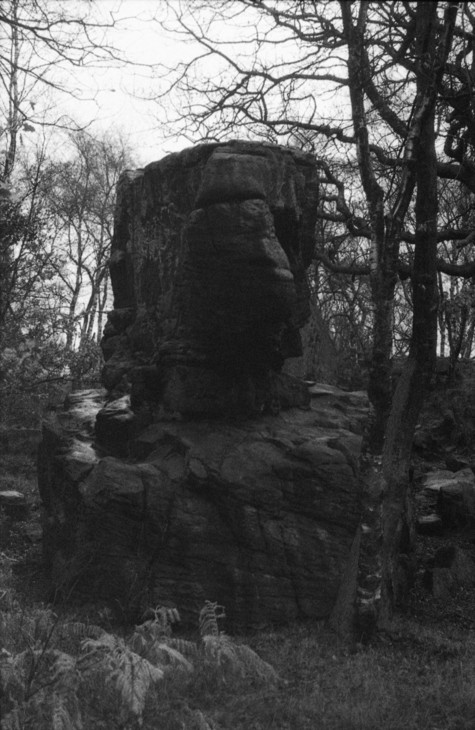Henry Moore in the Gemma Levine Archive
Ann Harezlak
The Gemma Levine Archive, housed in the Tate Archive, comprises photographs, audio recordings, ephemera and various volumes. A leading portrait photographer, Levine (born 1939) produced twenty publications and her work featured in over sixty exhibitions. Her photographs were sometimes shown alongside Moore’s sculptures. The mentorship she received from Henry Moore, whom she visited at his home Hoglands in the village of Perry Green, Hertfordshire, from 1976 to his death in 1986, played a key role in developing her professional practice, and her archive is rich in materials relating to this period in her life. These include unpublished photographs and contact sheets of photo shoots.
Levine worked with Moore to produce three photographic books about his life and work: With Henry Moore: The Artist at Work (1978), Henry Moore: Wood Sculpture (1983) and Henry Moore: An Illustrated Biography (1985). Together these volumes offered fresh and sometimes seemingly intimate insights into the life and practice of the artist in the last decade of his life.
Mentorship and collaboration
‘I think everyone in life has a mentor, and he was mine.’
Gemma Levine speaking about Henry Moore at Tate Britain 2012
Gemma Levine speaking about Henry Moore at Tate Britain 2012
When Levine visited Moore at his home, they would occasionally walk together around the grounds, taking photographs of the sculptures in the gardens. Camera in hand, Moore would discuss shape, highlights and shadows in the things they were seeing. Levine consciously sought to adopt Moore’s artistic perspective and emulate his approach in her photographs.
Each of the three photo books she made was developed collaboratively with Moore. She showed him her contact sheets and recorded his responses to the images on them. The choice of images for the books was recorded on the sheets themselves, including mark-ups for crops and other alterations. The texts for the publications were developed from edited versions of their recorded discussions.
As well as opening his studio to Levine and many other photographers, Moore also extended his mentorship to studio assistants. During his career, over forty people – mainly young sculptors who were still in college or who had just finished their studies – worked for Moore. These assistants undertook a range of tasks and were taught carving techniques and methods of scaling up. They learnt about Moore’s approach to size and scale, and often contributed to his artistic ideas.
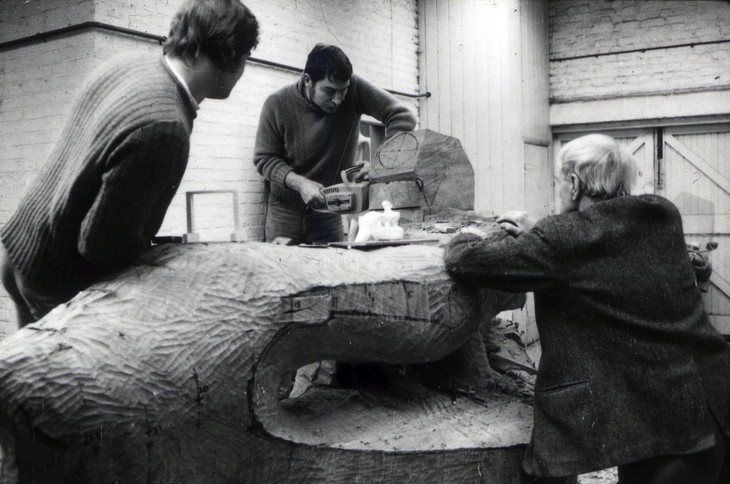
Gemma Levine
Studio assistants Malcolm Woodward and Michel Muller with Henry Moore working on Reclining Figure: Holes 1976–8 in the Yellow Brick Studio, 26 January 1978
© Gemma Levine/Tate
Photo: Tate Archive
Gemma Levine
Studio assistants Malcolm Woodward and Michel Muller with Henry Moore working on Reclining Figure: Holes 1976–8 in the Yellow Brick Studio, 26 January 1978
© Gemma Levine/Tate
Photo: Tate Archive
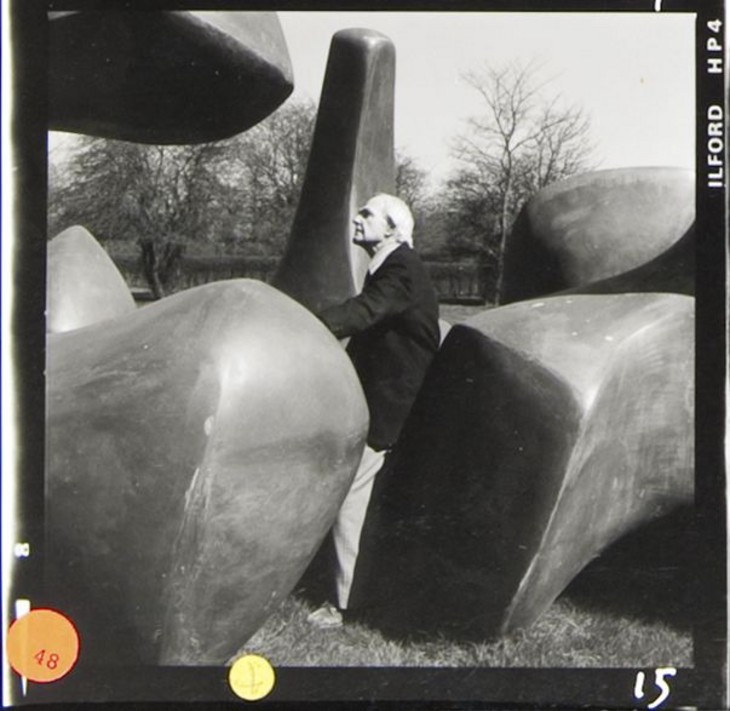
Gemma Levine
Henry Moore arranging elements of Three Piece Sculpture: Vertebrae 1968–9 at Hoglands 6 April 1978, published in With Henry Moore: The Artist at Work (1978).
Tate Archive TGA 201012 (LN47, 15)
© Gemma Levine/Tate; © The Henry Moore Foundation. All Rights Reserved
Gemma Levine
Henry Moore arranging elements of Three Piece Sculpture: Vertebrae 1968–9 at Hoglands 6 April 1978, published in With Henry Moore: The Artist at Work (1978).
Tate Archive TGA 201012 (LN47, 15)
© Gemma Levine/Tate; © The Henry Moore Foundation. All Rights Reserved
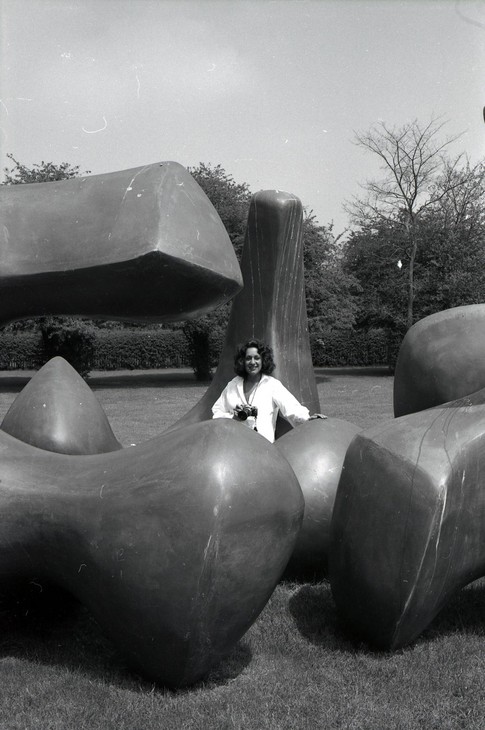
Gemma Levine with Henry Moore's Three Piece Sculpture: Vertebrae 1968–9 at Hoglands c.1978
Tate Archive TGA 201012 (LN55B, 6A)
© Gemma Levine/Tate; © The Henry Moore Foundation. All Rights Reserved
Photo: David Mitchinson
Gemma Levine with Henry Moore's Three Piece Sculpture: Vertebrae 1968–9 at Hoglands c.1978
Tate Archive TGA 201012 (LN55B, 6A)
© Gemma Levine/Tate; © The Henry Moore Foundation. All Rights Reserved
Photo: David Mitchinson
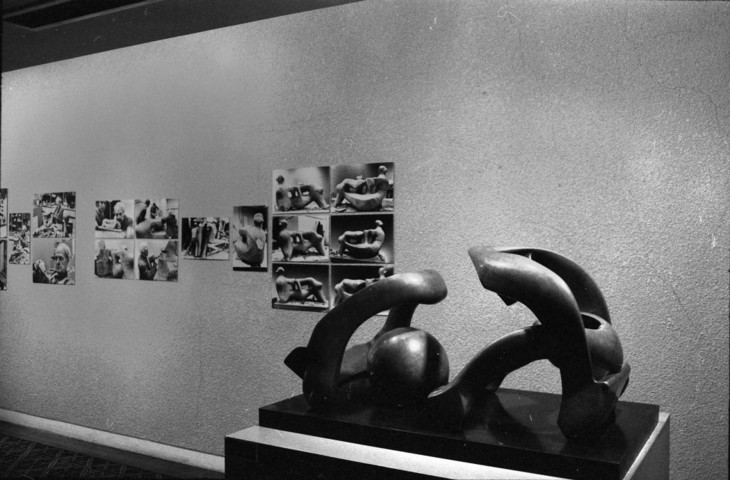
Gemma Levine
Photograph showing Gemma Levine's photographs on display alongside Moore's Working Model of Hill Arches 1972, c.1978
Tate Archive
© Gemma Levine/Tate
Gemma Levine
Photograph showing Gemma Levine's photographs on display alongside Moore's Working Model of Hill Arches 1972, c.1978
Tate Archive
© Gemma Levine/Tate
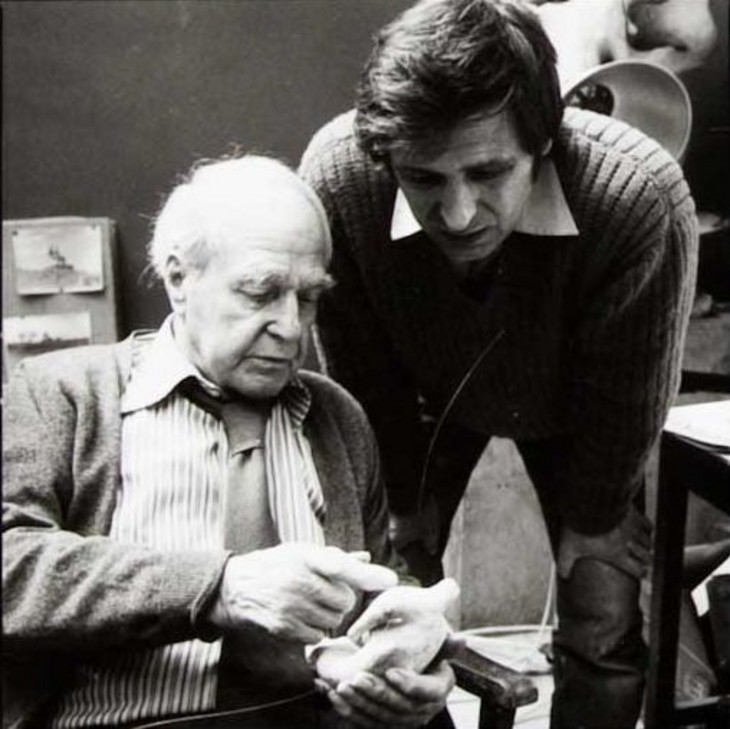
Gemma Levine
Henry Moore and Malcolm Woodward looking at Maquette for Mother and Child: Block Seat 1983 in the Bourne Maquette Studio
Tate Archive
© Gemma Levine/Tate
Gemma Levine
Henry Moore and Malcolm Woodward looking at Maquette for Mother and Child: Block Seat 1983 in the Bourne Maquette Studio
Tate Archive
© Gemma Levine/Tate
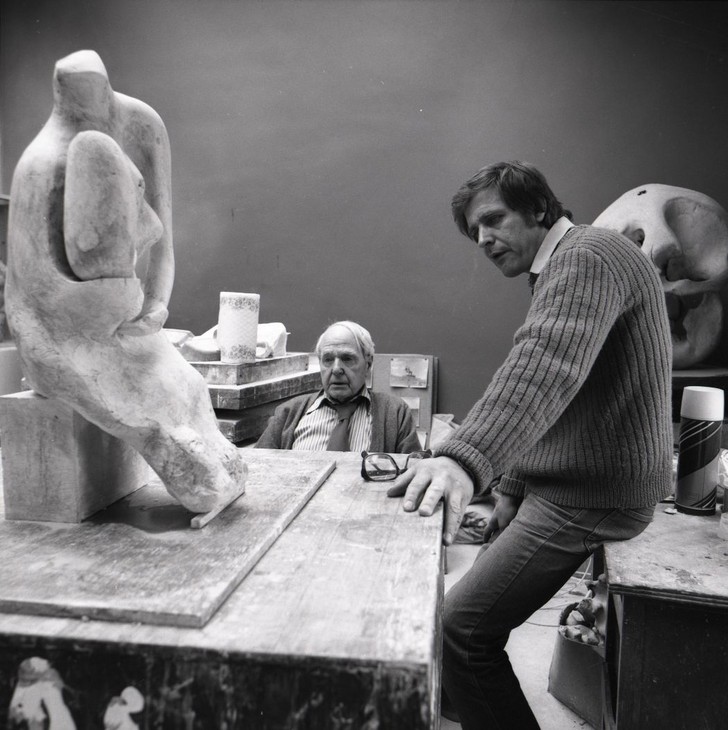
Gemma Levine
Henry Moore and Malcolm Woodward looking at Working Model for Mother and Child: Block Seat 1983 in the Bourne Maquette Studio
Tate Archive
© Gemma Levine/Tate
Gemma Levine
Henry Moore and Malcolm Woodward looking at Working Model for Mother and Child: Block Seat 1983 in the Bourne Maquette Studio
Tate Archive
© Gemma Levine/Tate
Portraits of the artist
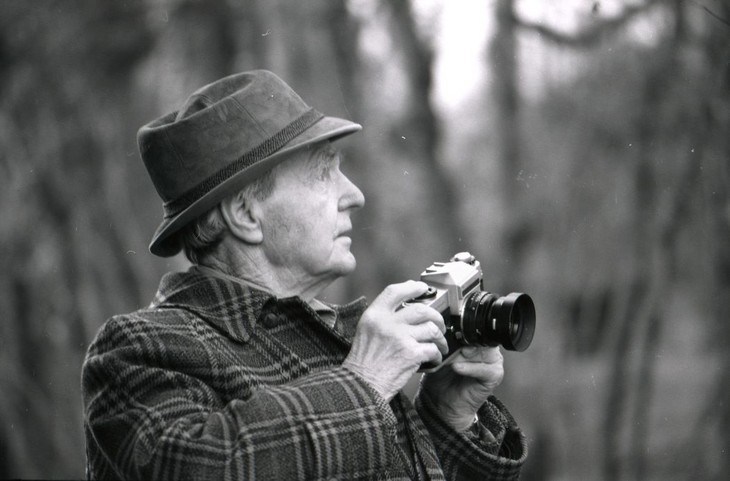
Gemma Levine
Henry Moore with his camera in the Dane Tree House Orchard at Perry Green, 16 January 1978
Tate Archive
© Gemma Levine/Tate
Gemma Levine
Henry Moore with his camera in the Dane Tree House Orchard at Perry Green, 16 January 1978
Tate Archive
© Gemma Levine/Tate
While many photographs of Moore at work were staged, Levine was an unobtrusive presence and was able to capture Moore in the midst of his work. Self-consciously adopting Moore’s interest in the details of light and shade in nature and in sculpture, Levine highlighted these same aspects in her images of the artist’s face and hands.

Gemma Levine
Gemma Levine Photograph of Henry Moore's hands taken in the Gildmore Graphic Studio during Levine's first meeting with Moore, July 1976
Tate Archive
© Gemma Levine/Tate
Gemma Levine
Gemma Levine Photograph of Henry Moore's hands taken in the Gildmore Graphic Studio during Levine's first meeting with Moore, July 1976
Tate Archive
© Gemma Levine/Tate
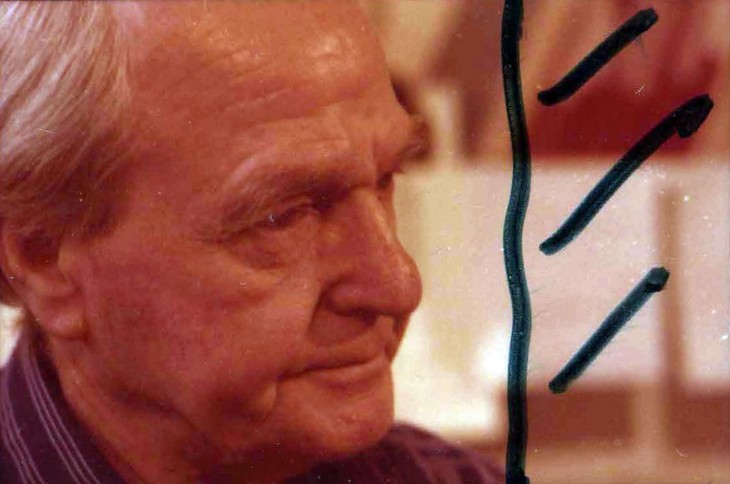
Gemma Levine
Photograph of Henry Moore taken in the Gildmore Graphic Studio during Levine's first meeting with Moore, July 1976
Tate Archive
© Gemma Levine/Tate
Gemma Levine
Photograph of Henry Moore taken in the Gildmore Graphic Studio during Levine's first meeting with Moore, July 1976
Tate Archive
© Gemma Levine/Tate
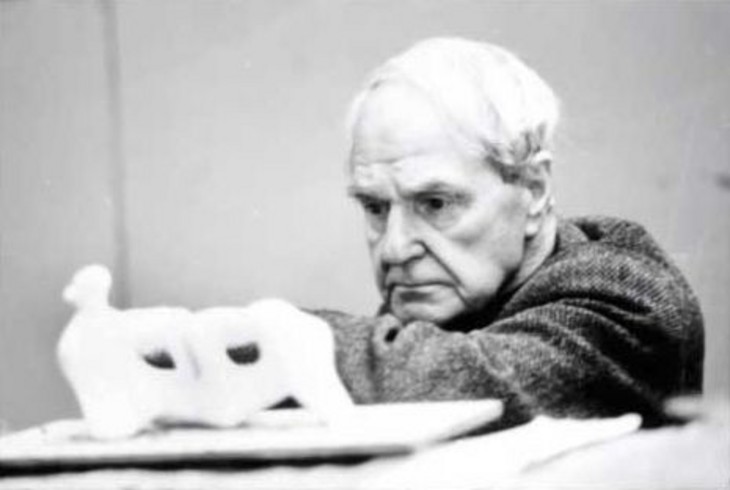
Gemma Levine
Henry Moore and the plaster maquette for Reclining Figure: Holes 1976–8 in the Yellow Brick Studio, c.1978
Tate Archive
© Gemma Levine/Tate
Gemma Levine
Henry Moore and the plaster maquette for Reclining Figure: Holes 1976–8 in the Yellow Brick Studio, c.1978
Tate Archive
© Gemma Levine/Tate
Vision and touch
‘I could read the character of Moore from his hands; the sculpture and his hands were almost one.’
Gemma Levine, Interviewed by Ann Harezlak at Levine’s home in London, November 2013
Gemma Levine, Interviewed by Ann Harezlak at Levine’s home in London, November 2013
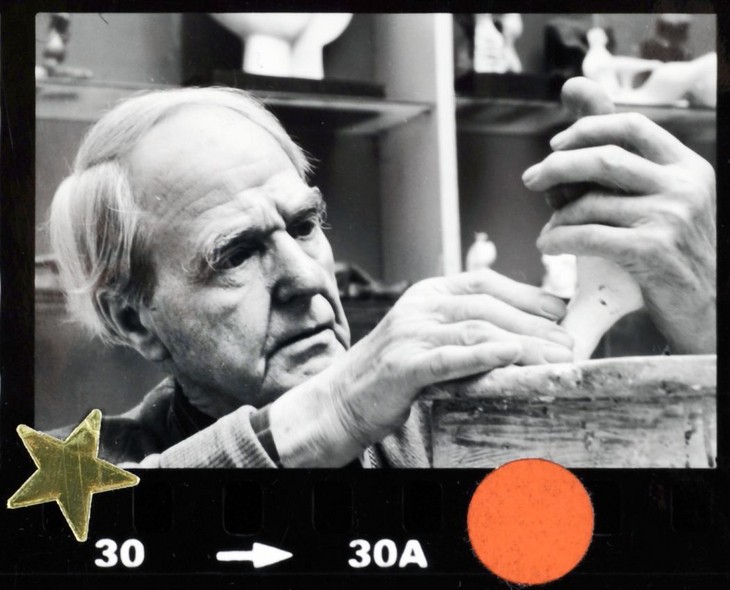
Gemma Levine
Henry Moore studying found objects in the Bourne Maquette Studio, 2 February 1978
Tate Archive
© Gemma Levine/Tate
Gemma Levine
Henry Moore studying found objects in the Bourne Maquette Studio, 2 February 1978
Tate Archive
© Gemma Levine/Tate
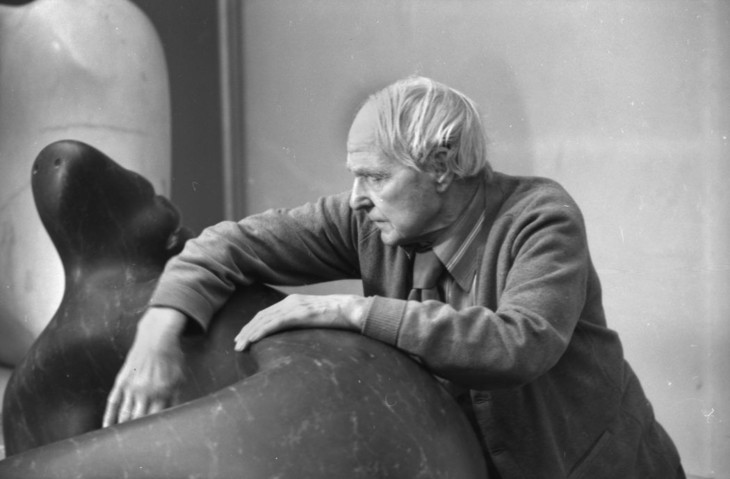
Gemma Levine
Gemma Levine Henry Moore caressing Reclining Figure: Curved 1977 in the Yellow Brick Studio, 26 January 1978
Tate Archive
© Gemma Levine/Tate
Gemma Levine
Gemma Levine Henry Moore caressing Reclining Figure: Curved 1977 in the Yellow Brick Studio, 26 January 1978
Tate Archive
© Gemma Levine/Tate
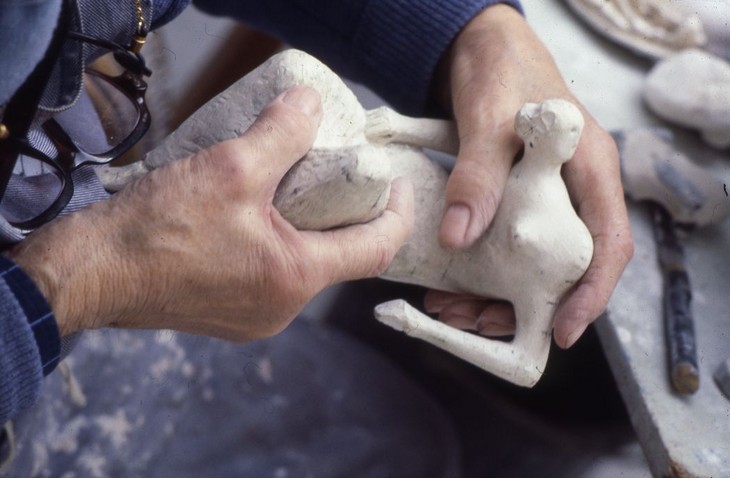
Gemma Levine
Gemma Levine Henry Moore's hands holding a plaster maquette of Reclining Figure: Angles 1979 in the Bourne Maquette Studio c.1978
Tate Archive
© Gemma Levine/Tate
Gemma Levine
Gemma Levine Henry Moore's hands holding a plaster maquette of Reclining Figure: Angles 1979 in the Bourne Maquette Studio c.1978
Tate Archive
© Gemma Levine/Tate
Artistic process
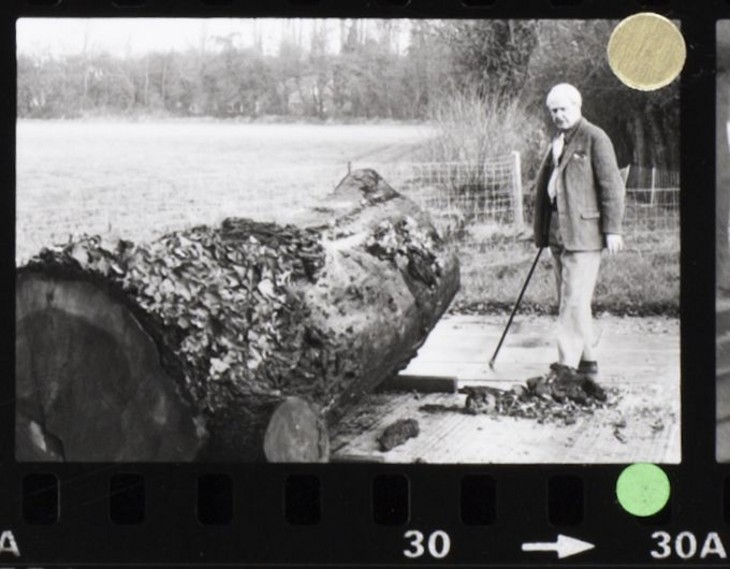
Gemma Levine
Henry Moore examining the trunk of a diseased elm at Hoglands, 8 December 1977
Tate Archive
© Gemma Levine/Tate
Gemma Levine
Henry Moore examining the trunk of a diseased elm at Hoglands, 8 December 1977
Tate Archive
© Gemma Levine/Tate
Levine also photographed Moore’s tools and implements of production. Photographs of Moore at work in his etching studio and those taken at the Curwen Press in London show the progression of a number of graphic works, including The Reclining Figure Portfolio 1978, Reclining Figure and Mother and Child Studies 1977 and Reclining Figure Interior Setting II 1977.
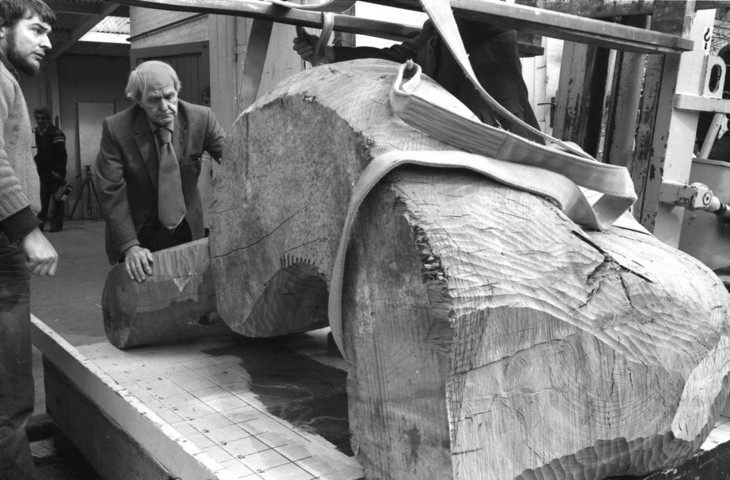
Gemma Levine
Michel Muller and Henry Moore moving Reclining Figure: Holes 1976–8 so that it could be worked on underneath, 15 March 1978
Tate Archive
© Gemma Levine/Tate
Gemma Levine
Michel Muller and Henry Moore moving Reclining Figure: Holes 1976–8 so that it could be worked on underneath, 15 March 1978
Tate Archive
© Gemma Levine/Tate

Gemma Levine
Henry Moore's Reclining Figure: Holes 1976–8 at an intermediate stage and its plaster maquette, 12 April 1978
Tate Archive
© Gemma Levine/Tate
Gemma Levine
Henry Moore's Reclining Figure: Holes 1976–8 at an intermediate stage and its plaster maquette, 12 April 1978
Tate Archive
© Gemma Levine/Tate
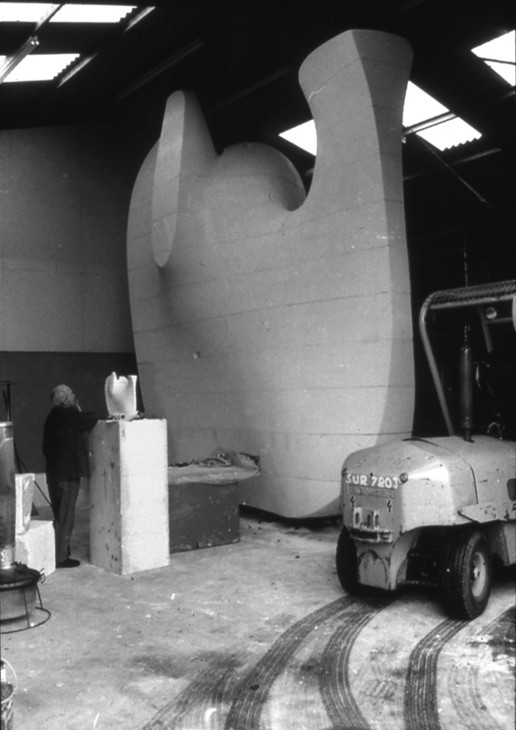
Gemma Levine
Henry Moore looking at half the Working Model for Mirror Knife Edge 1976 in plaster in front of half the full scale, polystyrene version, 1977
Tate Archive
© Gemma Levine/Tate
Gemma Levine
Henry Moore looking at half the Working Model for Mirror Knife Edge 1976 in plaster in front of half the full scale, polystyrene version, 1977
Tate Archive
© Gemma Levine/Tate
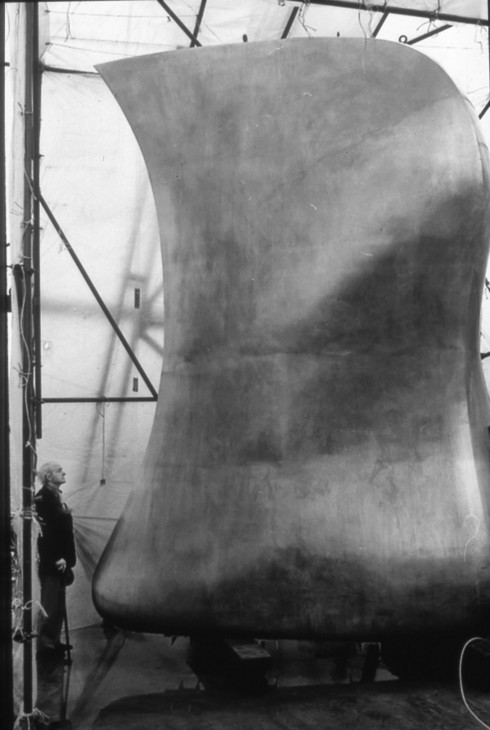
Gemma Levine
Henry Moore at the Morris Singer bronze foundry in Basingstoke, with the bronze cast of half of Mirror Knife Edge 1977, being prepared for the National Gallery of Art, Washington DC, March 1978
Tate Archive
© Gemma Levine/Tate
Gemma Levine
Henry Moore at the Morris Singer bronze foundry in Basingstoke, with the bronze cast of half of Mirror Knife Edge 1977, being prepared for the National Gallery of Art, Washington DC, March 1978
Tate Archive
© Gemma Levine/Tate
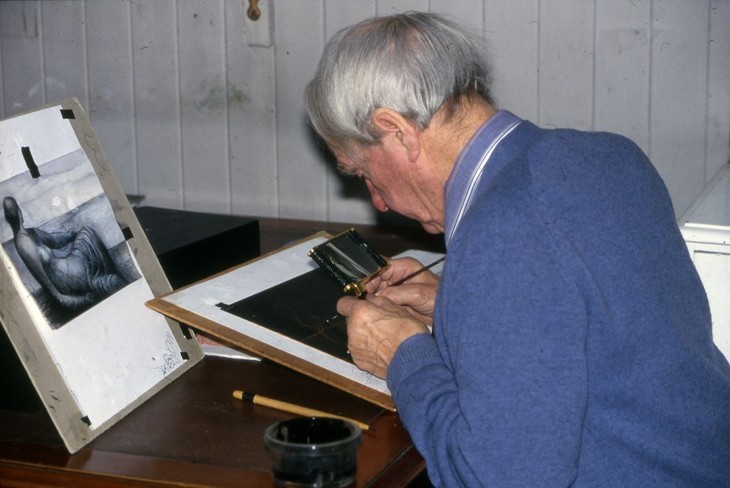
Gemma Levine
Henry Moore working on a prepared copper plate for The Reclining Figure Portfolio 1978 in the Etching Studio, December 1977
Tate Archive
© Gemma Levine/Tate
Gemma Levine
Henry Moore working on a prepared copper plate for The Reclining Figure Portfolio 1978 in the Etching Studio, December 1977
Tate Archive
© Gemma Levine/Tate

Gemma Levine
A printer at the Curwen Press, London, preparing a colour state of Henry Moore's lithograph Reclining Figure Interior Setting II 1977, 19 April 1978
Tate Archive
© Gemma Levine/Tate
Gemma Levine
A printer at the Curwen Press, London, preparing a colour state of Henry Moore's lithograph Reclining Figure Interior Setting II 1977, 19 April 1978
Tate Archive
© Gemma Levine/Tate
5. Photographing sculpture
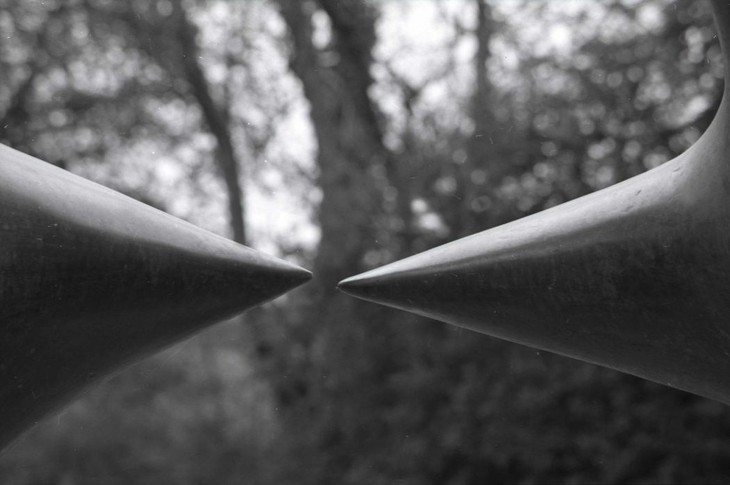
Gemma Levine
Detail of Henry Moore's Oval with Points 1968–70 at Hoglands, 19 April 1978
Tate Archive
© Gemma Levine/Tate
Gemma Levine
Detail of Henry Moore's Oval with Points 1968–70 at Hoglands, 19 April 1978
Tate Archive
© Gemma Levine/Tate
Moore believed that sculpture should be photographed from multiple angles, not only to create comprehensive records but also to mimic the experience of viewing works. He also stressed the importance of natural light in his sculptural and photographic practice and disregarded flash photography because of it flattened forms. Moore and Levine’s collaborative publications reveal a mix of documentary approaches as well as more individual or subjective shots. Levine’s photographs of works such as Bird Basket 1939 in lignum vitae and string, and Oval with Points 1968–70 in bronze showed her interest in capturing specific details. Her 1978 photographs of Large Two Forms 1969 as installed in Kensington Gardens explored a sculpture in relation to its site.
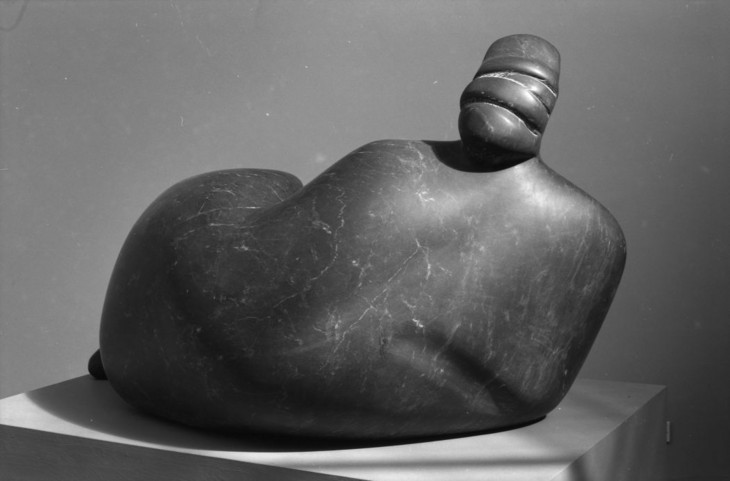
Gemma Levine
Gemma Levine Henry Moore's Reclining Figure: Curved 1977 in black marble in the Dane Tree House Gallery, 6 April 1978
Tate Archive
© Gemma Levine/Tate
Gemma Levine
Gemma Levine Henry Moore's Reclining Figure: Curved 1977 in black marble in the Dane Tree House Gallery, 6 April 1978
Tate Archive
© Gemma Levine/Tate
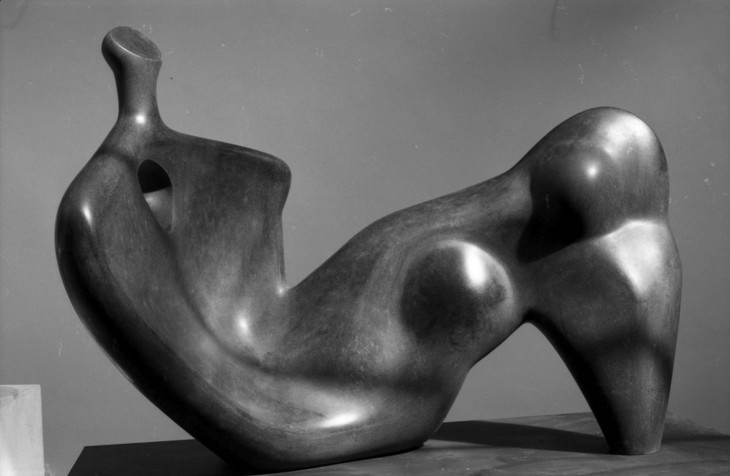
Gemma Levine
Henry Moore's Reclining Figure: Single Leg 1976 in black granite in the Dane Tree House Gallery, 6 April 1978
Tate Archive
© Gemma Levine/Tate
Gemma Levine
Henry Moore's Reclining Figure: Single Leg 1976 in black granite in the Dane Tree House Gallery, 6 April 1978
Tate Archive
© Gemma Levine/Tate
Moore in private
From spring 1976 Gemma Levine became a regular visitor to Moore’s home, Hoglands, in the village of Perry Green. While exploring the Hoglands estate and coming to know Moore’s daily routine, Levine sought to remain in the background and not disturb the artist’s life. In photographing his home she aimed to create a context for Moore’s artistic vision through the objects and artworks that surrounded him. Moore’s home environment is presented as welcoming but also a curated space for exhibiting artworks and artefacts.
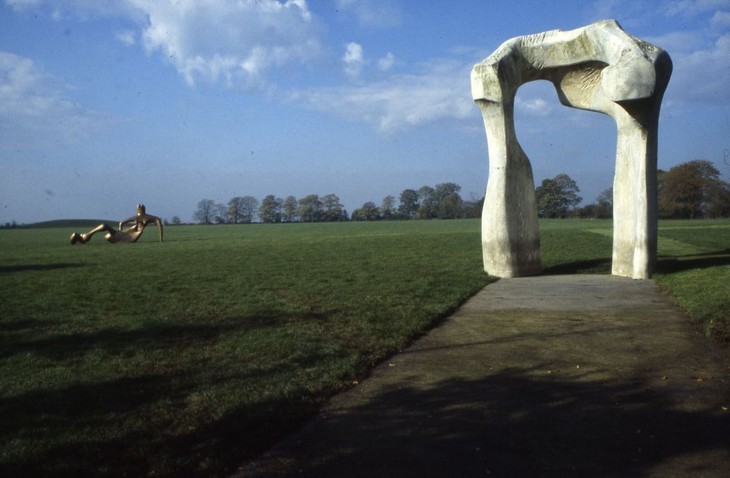
Gemma Levine
Gemma Levine Henry Moore's The Arch 1963–9 in white fiberglass and, in the distance, Large Reclining Figure 1984 in bronze on the Hoglands's estate c.1984
Tate Archive
© Gemma Levine/Tate
Gemma Levine
Gemma Levine Henry Moore's The Arch 1963–9 in white fiberglass and, in the distance, Large Reclining Figure 1984 in bronze on the Hoglands's estate c.1984
Tate Archive
© Gemma Levine/Tate
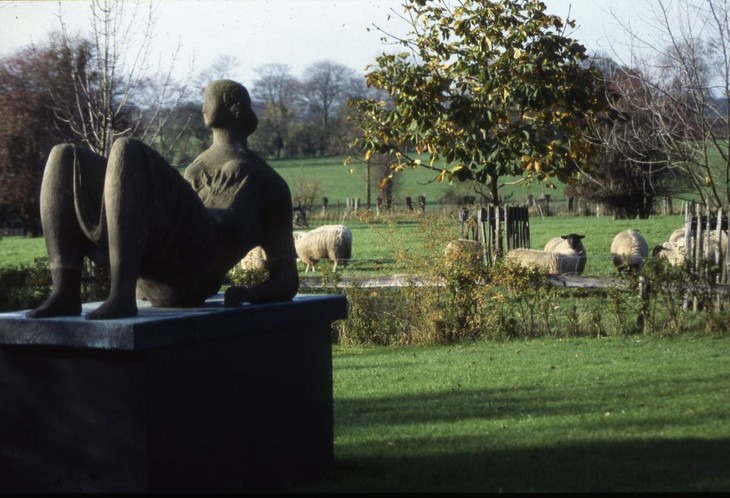
Gemma Levine
Henry Moore's Draped Reclining Figure 1952–3 in cast concrete, and sheep in the field at the Hoglands's estate c.1984
Tate Archive
© Gemma Levine/Tate
Gemma Levine
Henry Moore's Draped Reclining Figure 1952–3 in cast concrete, and sheep in the field at the Hoglands's estate c.1984
Tate Archive
© Gemma Levine/Tate
Moore in public

Gemma Levine
Gemma Levine Reporters gathered around Henry and Irina Moore at the unveiling of The Arch 1963–9 in Kensington Gardens, 1980
Tate Archive
© Gemma Levine/Tate
Gemma Levine
Gemma Levine Reporters gathered around Henry and Irina Moore at the unveiling of The Arch 1963–9 in Kensington Gardens, 1980
Tate Archive
© Gemma Levine/Tate
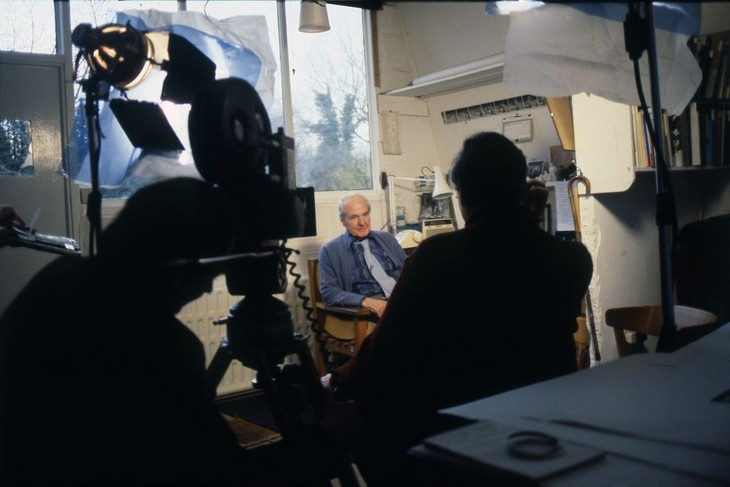
Gemma Levine
Henry Moore in the Gildmore Graphic Studio during the making of a film on his drawings by John Read for the BBC, 8 March 1978
Tate Archive
© Gemma Levine/Tate
Gemma Levine
Henry Moore in the Gildmore Graphic Studio during the making of a film on his drawings by John Read for the BBC, 8 March 1978
Tate Archive
© Gemma Levine/Tate
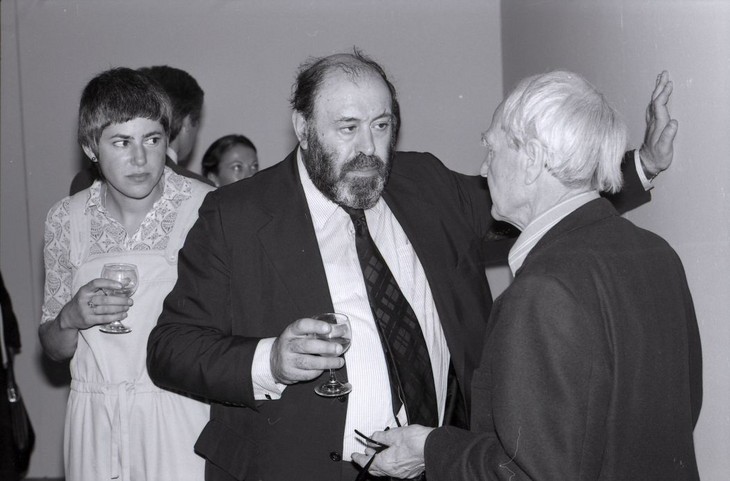
Gemma Levine
David Sylvester (centre) and Henry Moore at Moore's eightieth birthday exhibition held in the Serpentine Gallery, London, 29 June 1978
Tate Archive
© Gemma Levine/Tate
Gemma Levine
David Sylvester (centre) and Henry Moore at Moore's eightieth birthday exhibition held in the Serpentine Gallery, London, 29 June 1978
Tate Archive
© Gemma Levine/Tate
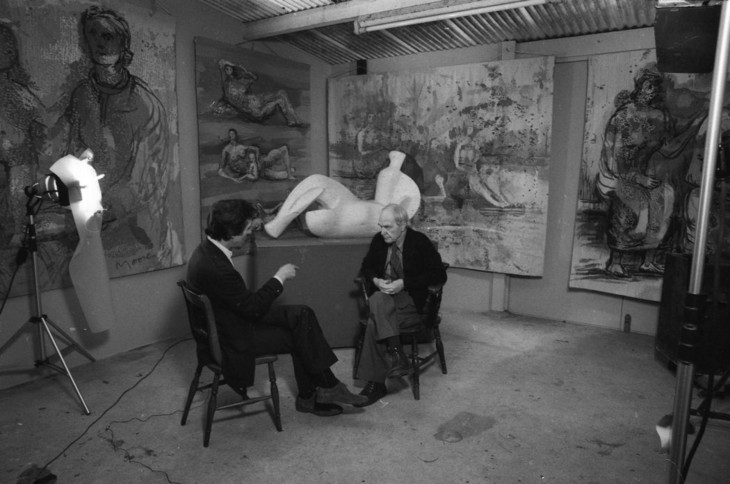
Gemma Levine
Henry Moore interviewed at West Dean College, West Sussex, with several of his works in the background Reclining Figure: Wing 1978, and tapestries from left to right: Two Seated Women and a Child 1977, Three Reclining Women with one Child 1978, Three Women in a Landscape 1979 and Three Seated Women with one Child 1978, c.1979–80
Tate Archive
© Gemma Levine/Tate
Gemma Levine
Henry Moore interviewed at West Dean College, West Sussex, with several of his works in the background Reclining Figure: Wing 1978, and tapestries from left to right: Two Seated Women and a Child 1977, Three Reclining Women with one Child 1978, Three Women in a Landscape 1979 and Three Seated Women with one Child 1978, c.1979–80
Tate Archive
© Gemma Levine/Tate
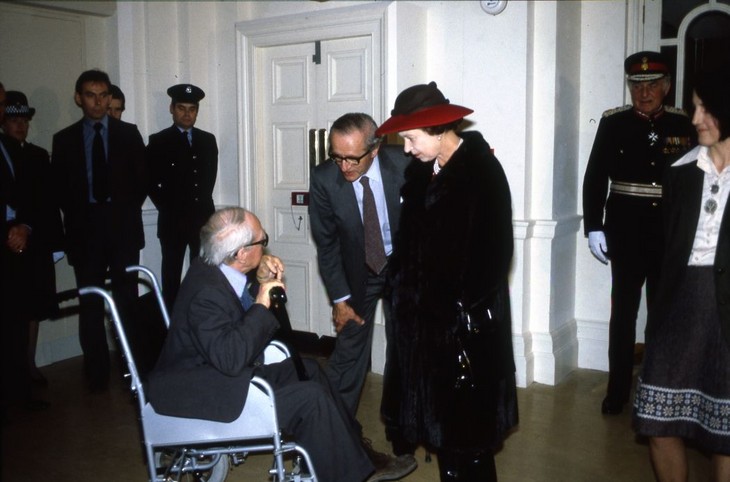
Gemma Levine
Henry Moore meeting Queen Elizabeth II at the opening of the Moore Sculpture Gallery at Leeds City Art Gallery, 26 November 1982
Tate Archive
© Gemma Levine/Tate
Gemma Levine
Henry Moore meeting Queen Elizabeth II at the opening of the Moore Sculpture Gallery at Leeds City Art Gallery, 26 November 1982
Tate Archive
© Gemma Levine/Tate

Gemma Levine
Installation view of Henry Moore's work on display at the re-opening of Leeds City Art Gallery, November 1982
Tate Archive
© Gemma Levine/Tate
Gemma Levine
Installation view of Henry Moore's work on display at the re-opening of Leeds City Art Gallery, November 1982
Tate Archive
© Gemma Levine/Tate
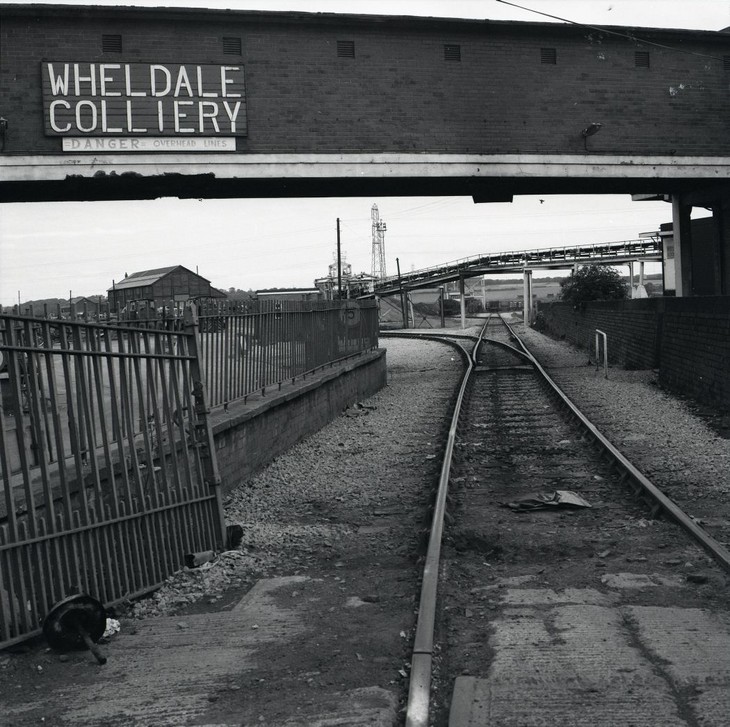
Gemma Levine
Wheldale Colliery, the place where Moore's father worked and where Moore observed miners at the coalface for a series of wartime drawings commissioned by the War Artists Advisory Committee c.1983–5
Tate Archive
© Gemma Levine/Tate
Gemma Levine
Wheldale Colliery, the place where Moore's father worked and where Moore observed miners at the coalface for a series of wartime drawings commissioned by the War Artists Advisory Committee c.1983–5
Tate Archive
© Gemma Levine/Tate
Henry Moore, photographed by Gemma Levine, With Henry Moore: the artist at work, Great Britain 1978, p.113
How to cite
Ann Harezlak, ‘Henry Moore in the Gemma Levine Archive
’, in Henry Moore: Sculptural Process and Public Identity, Tate Research Publication, 2015, https://www


